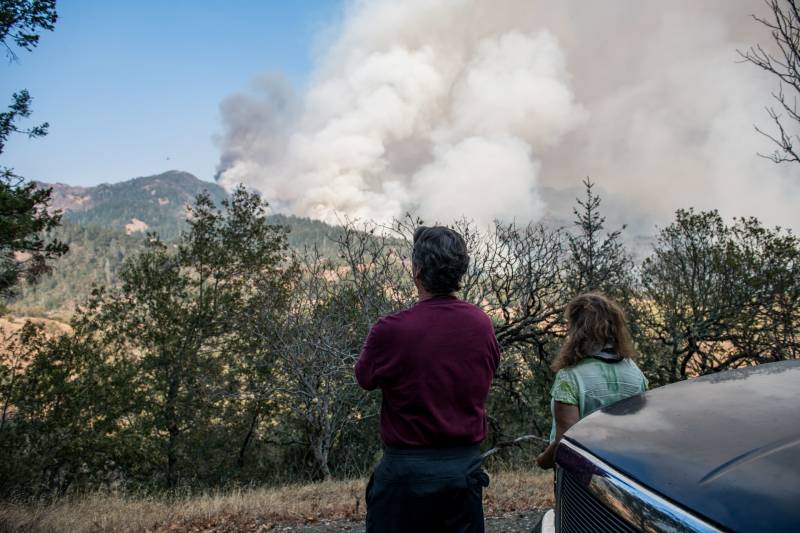All of Calistoga and the surrounding area remained under mandatory evacuation orders Friday, where a hazardous layer of smoke continued to shroud the sky, preventing air tankers from attacking the fire from above.
"This our second time being evacuated as an entire city. First time was in 2017 for the Tubbs Fire, and that was the first time in our history since 1863," said Calistoga Mayor Chris Canning. "We're tired of it."
Regardless of where people stand on the root causes of the fires, he said, there's no denying that conditions in the region have changed dramatically.
"There is something different, there is something odd, there is something wrong, and it's year after year after year," he said.
Crews on Friday were also working to establish control lines above the community of Oakville and beefed up efforts to protect the hillside community of Angwin, where clearer skies have allowed helicopters to drop retardant, Brunton said.
Additionally, crews have been sent to the Highway 29 corridor on the floor of the Napa Valley, where anticipated wind gusts from the north could blow embers onto dry vegetation.
The Glass Fire, which erupted during a high-wind event on Sunday, has destroyed more than 400 homes and commercial buildings across both counties and continued to threaten more than 28,800 others. No deaths or major injuries have been reported so far.
Fire and public safety officials warned that more evacuations are possible, and asked residents to remain vigilant, stay out of evacuation zones and stop demanding that officers let them back into off-limit neighborhoods.
The National Weather Service's red flag warning of gusts of up to 30 mph and hot, dry air, was in effect through early Saturday morning for the North Bay mountains. It also covers the East Bay Hills and Diablo Range, the Santa Cruz mountains and Los Padres National Forest, where the Dolan Fire is burning.
If firefighters can keep the flames at bay through the wind event, there's a good chance they'll be able to make steady progress containing the fire next week, said Cal Fire Incident Commander Billy See.
